Great Dixter tour with Fergus Garrett
Thursday 15 September 2022
Blessed with late summer sunshine, a group of 21 members met at Great Dixter for a private tour of the gardens with Head Gardener Fergus Garrett. Fergus has been in his role since 1993, having been mentored by the late Christopher Lloyd, and so there was no better person to show us around. He was very generous with his time and information, sharing all sorts of detail about the garden, including its history, plants, biodiversity, design and much more.
Great Dixter is often at the cutting edge of gardening in the UK, with change and experimentation a part of its essence. Even for those of us who had visited before, there was plenty new to see and learn, as the garden changes from season to season and year to year.
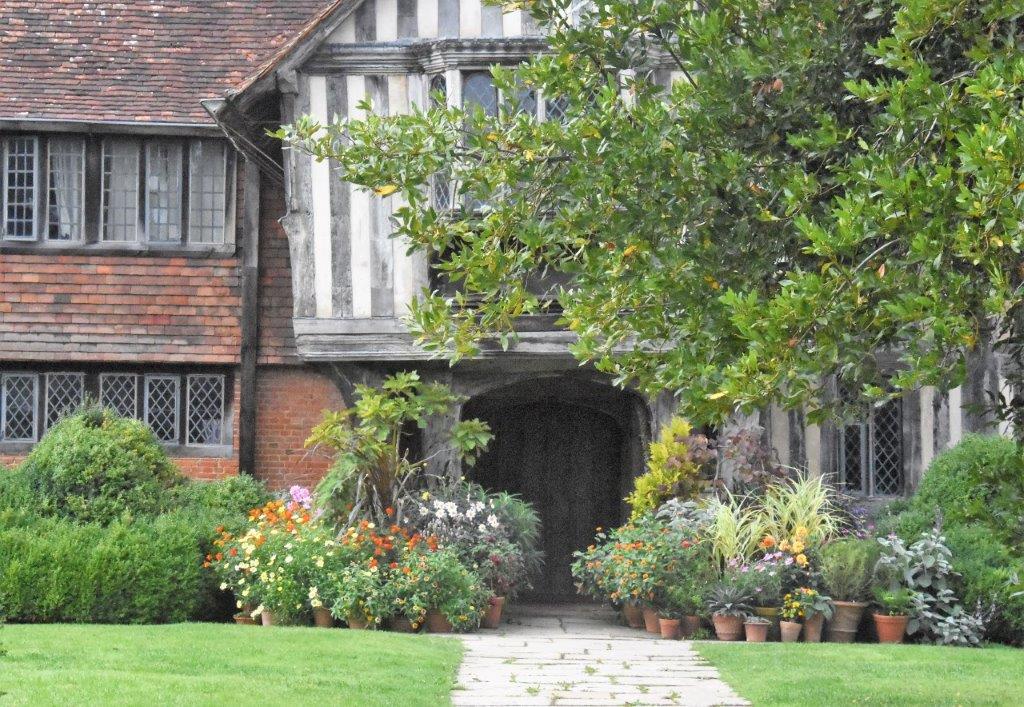
The front of the house at Great Dixter
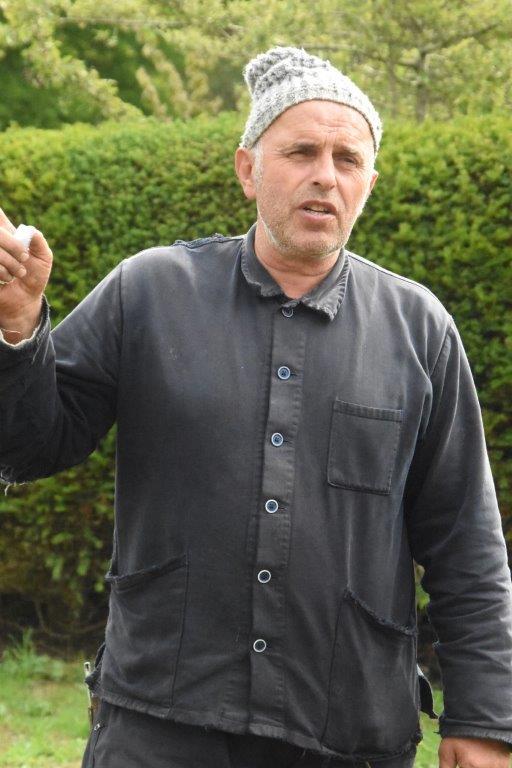
Fergus Garrett, Head Gardener
Fergus began by explaining that the garden is mostly mixed border planting with areas of seasonal planting, such as the pot displays and certain pockets of plants in borders. The majority of the plants are grown on-site and a lot of self-sown seedlings are carefully managed to add interest to different areas of the garden throughout the year. The team are always looking to do new things with their seasonal displays, and Fergus believes that in 30 years he’s never repeated the same planting display in the same place!
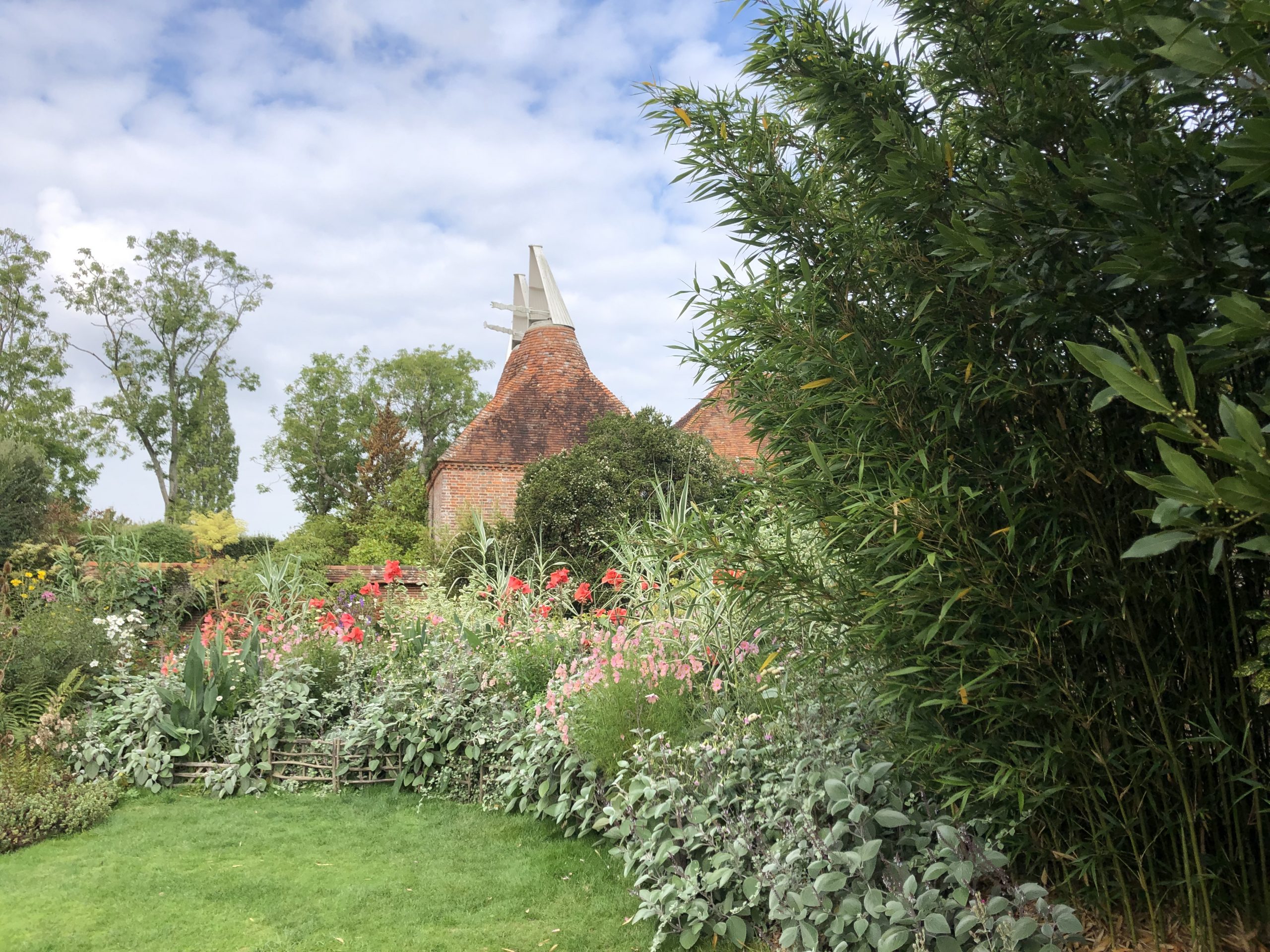
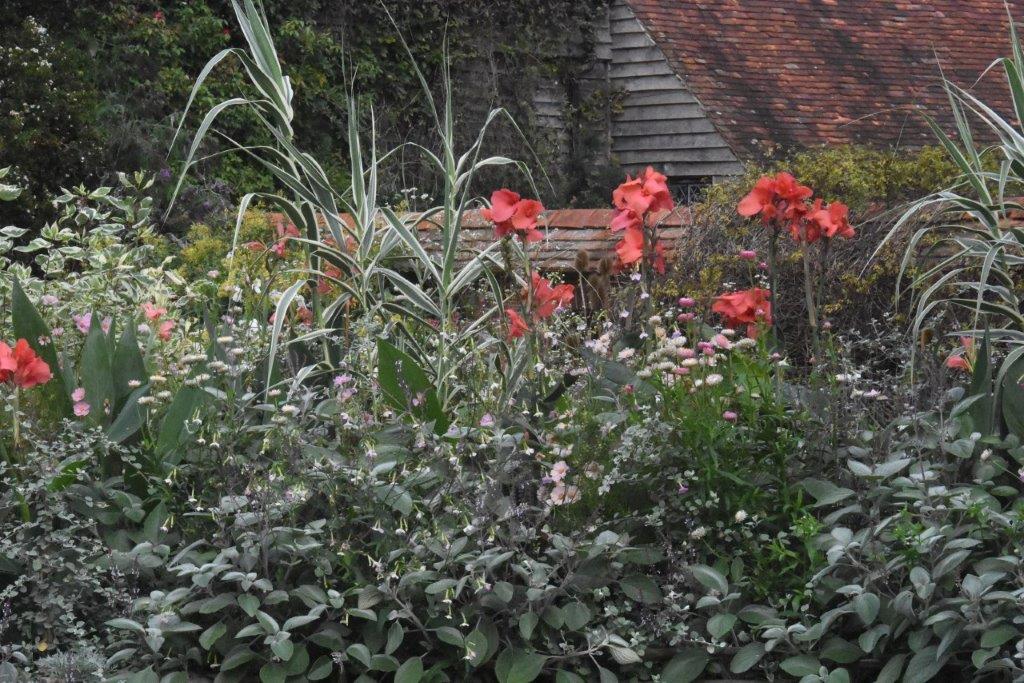
Seasonal summer display which includes Nicotiana, Plectranthus, Helichrysum, Canna and Cosmos
The environmental impact of the garden is a top priority for the staff. This year they have been particularly conscious of their water usage and have cut it back. Since January, one third of the garden has received no additional water at all; one third has had only two sprinkler sessions of two hours each; and one third has had four sprinkler sessions of two hours each. Biodiversity audits carried out over the past two years have shown that Great Dixter ranks highly in terms of biodiversity in the UK. Several factors have played a role in this – no chemical spraying has taken place for 15 years, there are lots of different habitats within the garden, and there is a long season of planting and flowering.
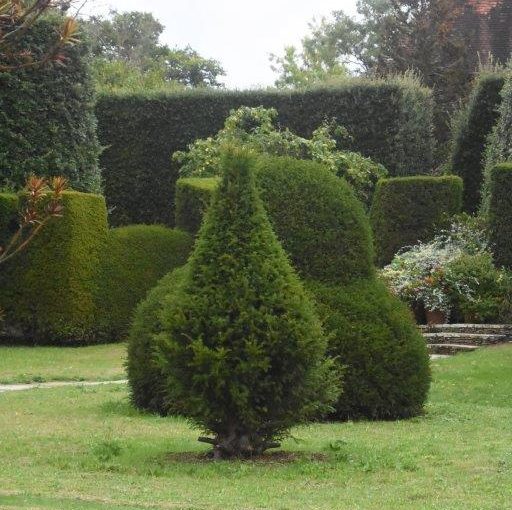
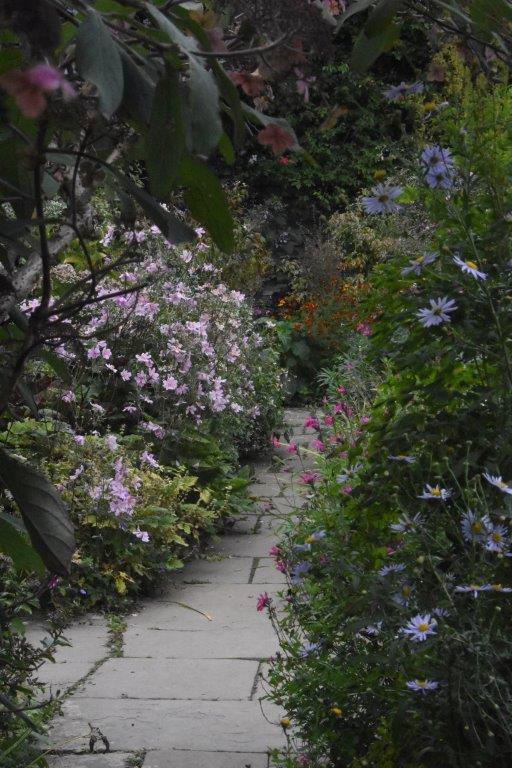
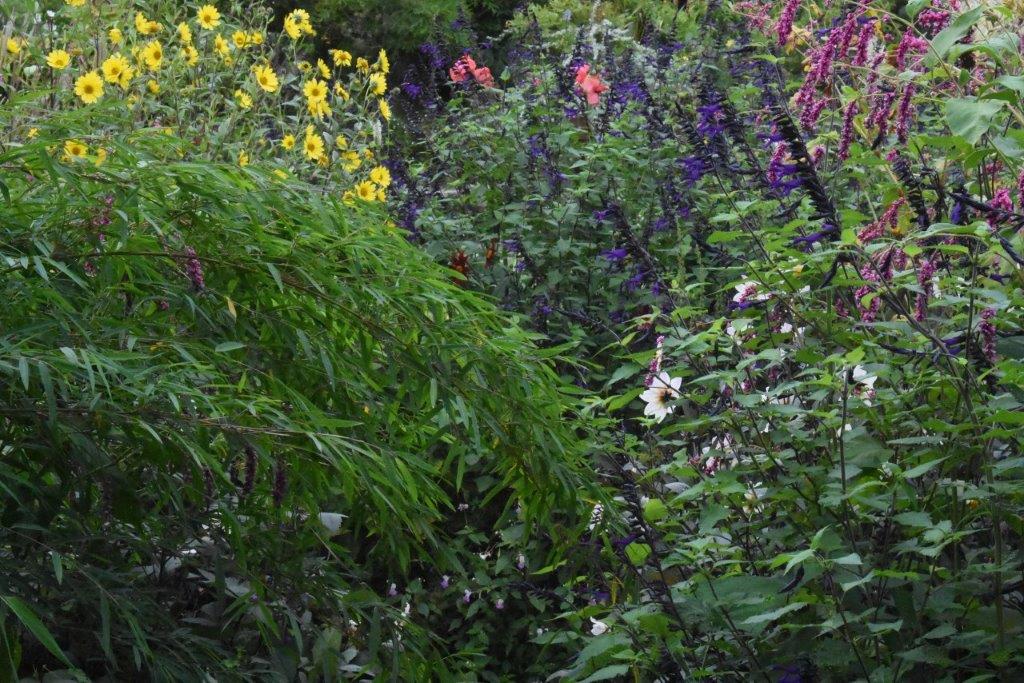
The Sunken Garden and Barn Garden are some of the most biodiverse areas of the garden. These are planted in the informal style loved by Christopher Lloyd and his mother, and in mid-September they were both filled with colour and interest. Salvia, Rudbeckia, Japanese anemones, hydrangeas and asters stood head-high. When this display dies down at the end of the season, various winter foliage plants will come to the fore until snowdrops, crocuses, daffodils and alliums take over.
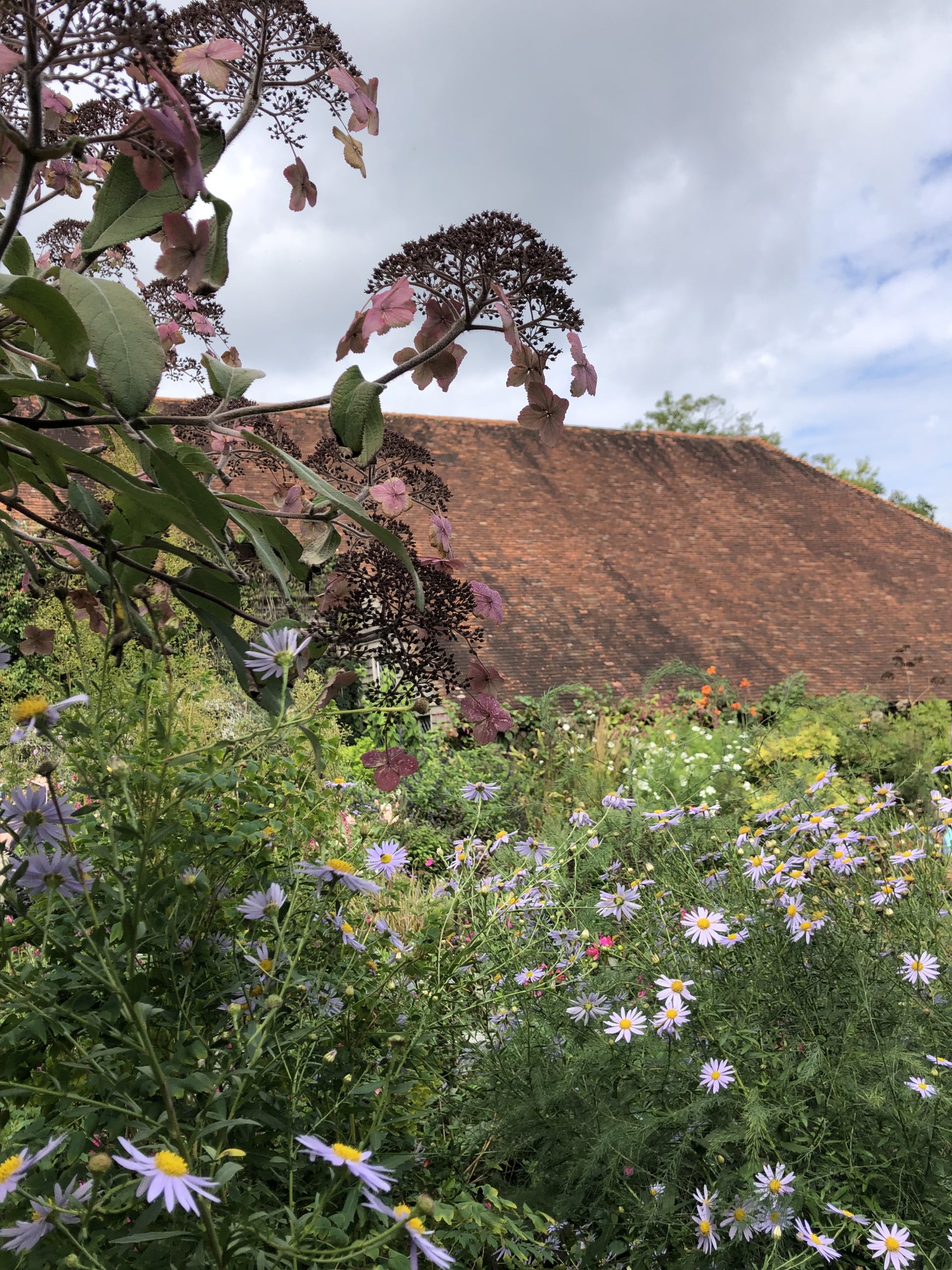
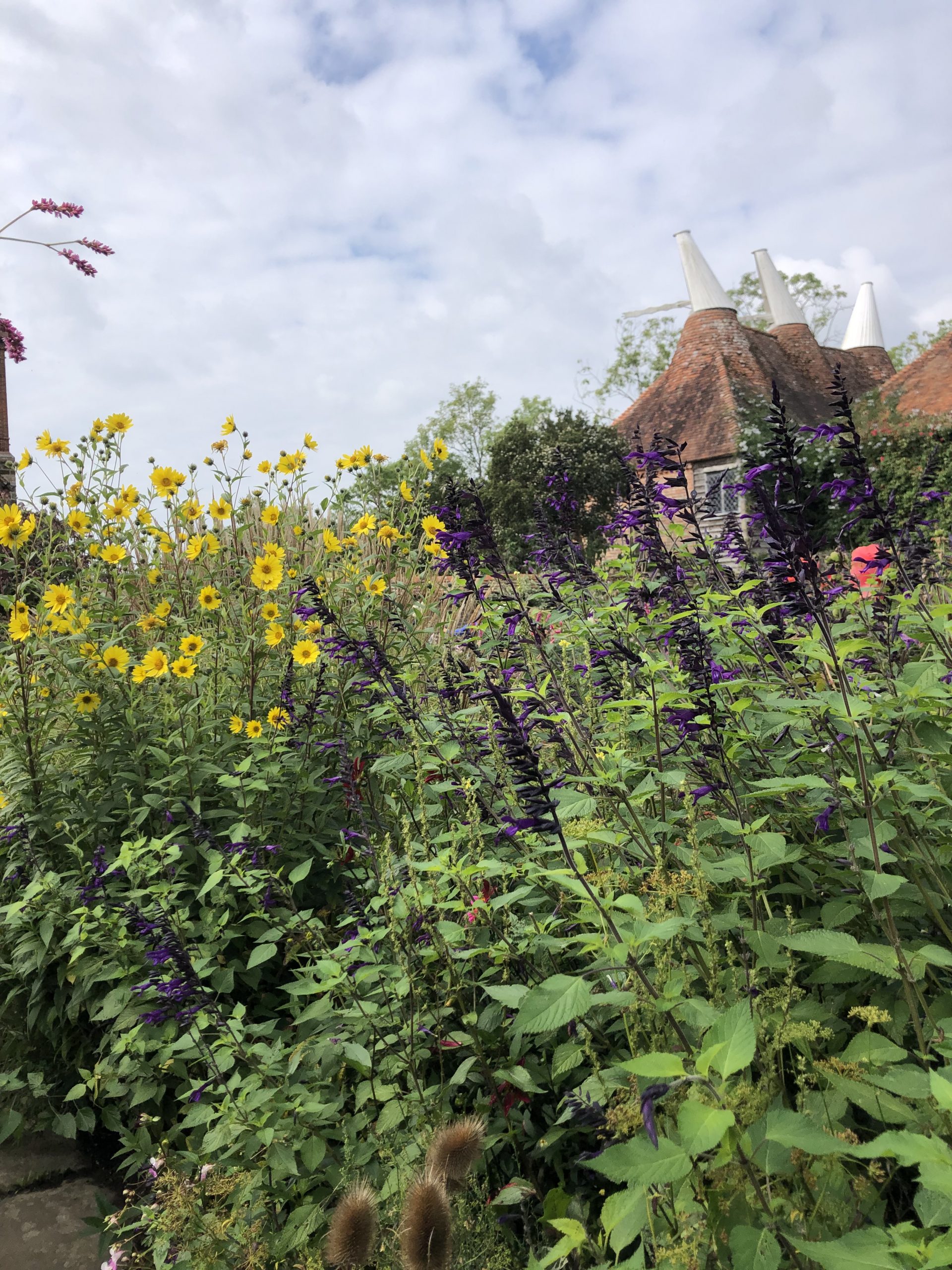
Hydrangea, Aster, Rudbeckia and Salvia on display
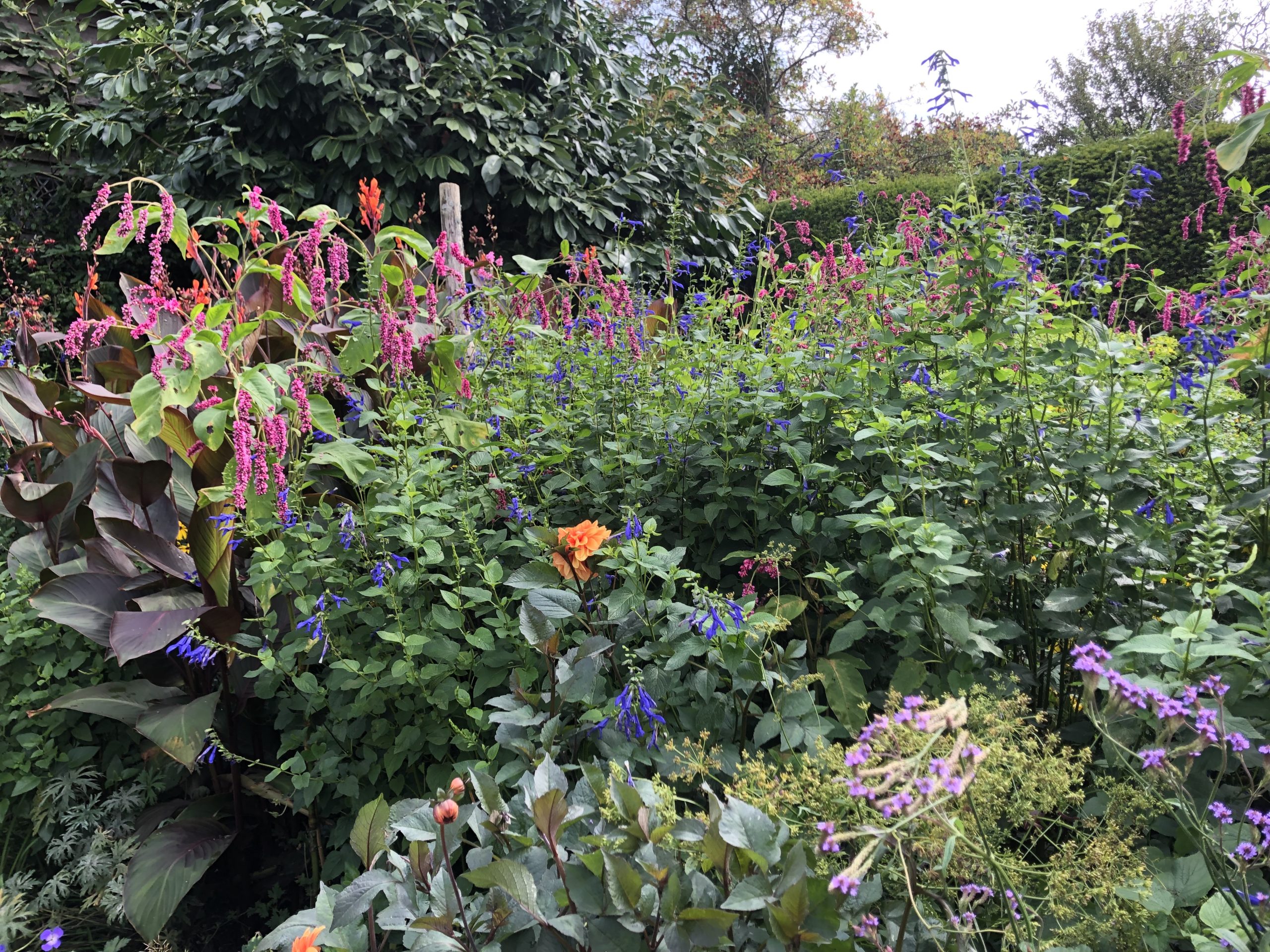
Late summer colour in the Barn Garden
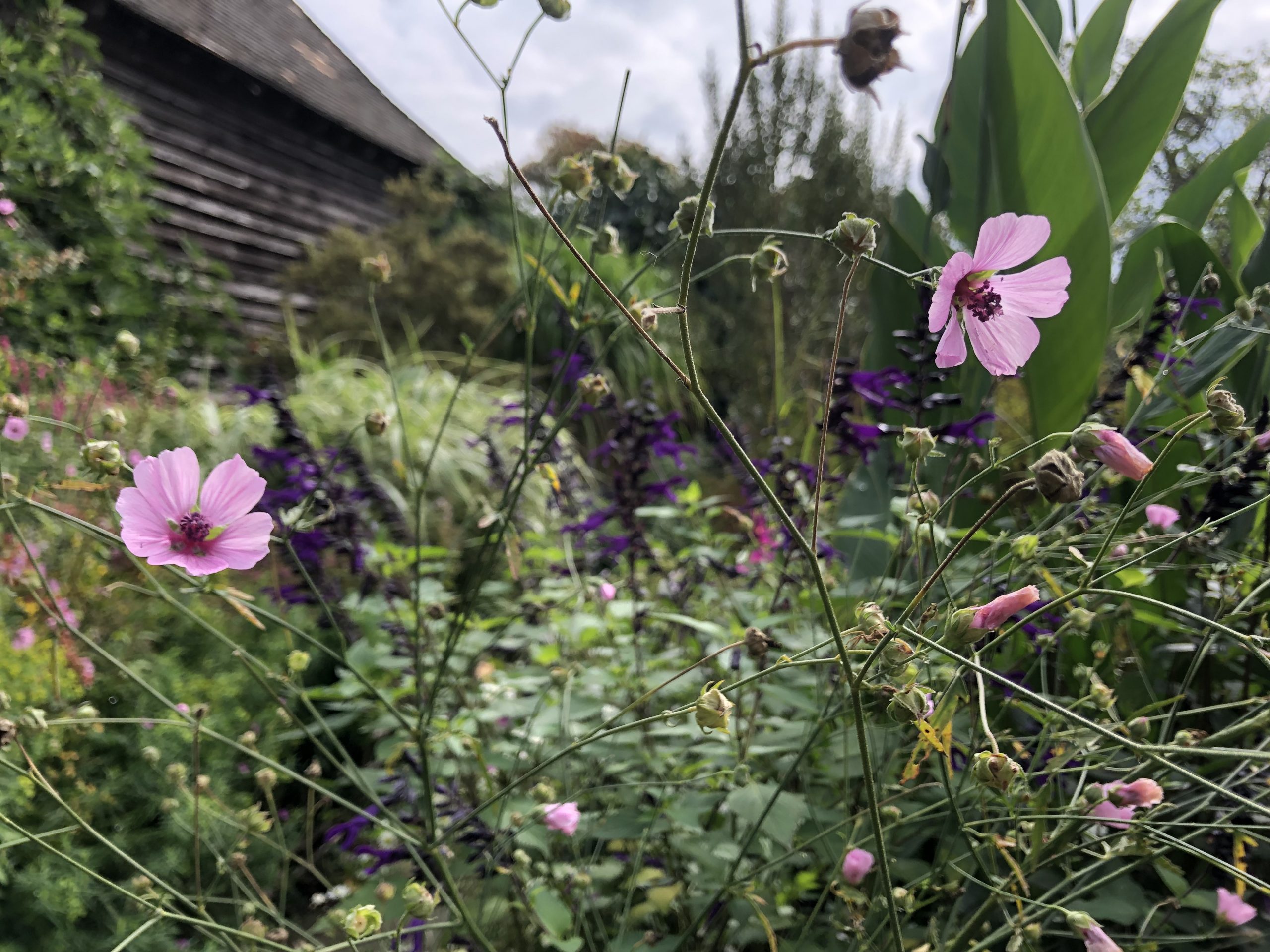
Althaea cannabina in the Sunken Garden
In the Wall Garden, there was an impressive pot display comprised mostly of conifers, a design that has been put together by one of the current students in the garden. Cestrum parqui gave a colourful backdrop for this and was a magnet for insects. A tall, flowering Aralia spinosa added to the exotic feel within this small space.
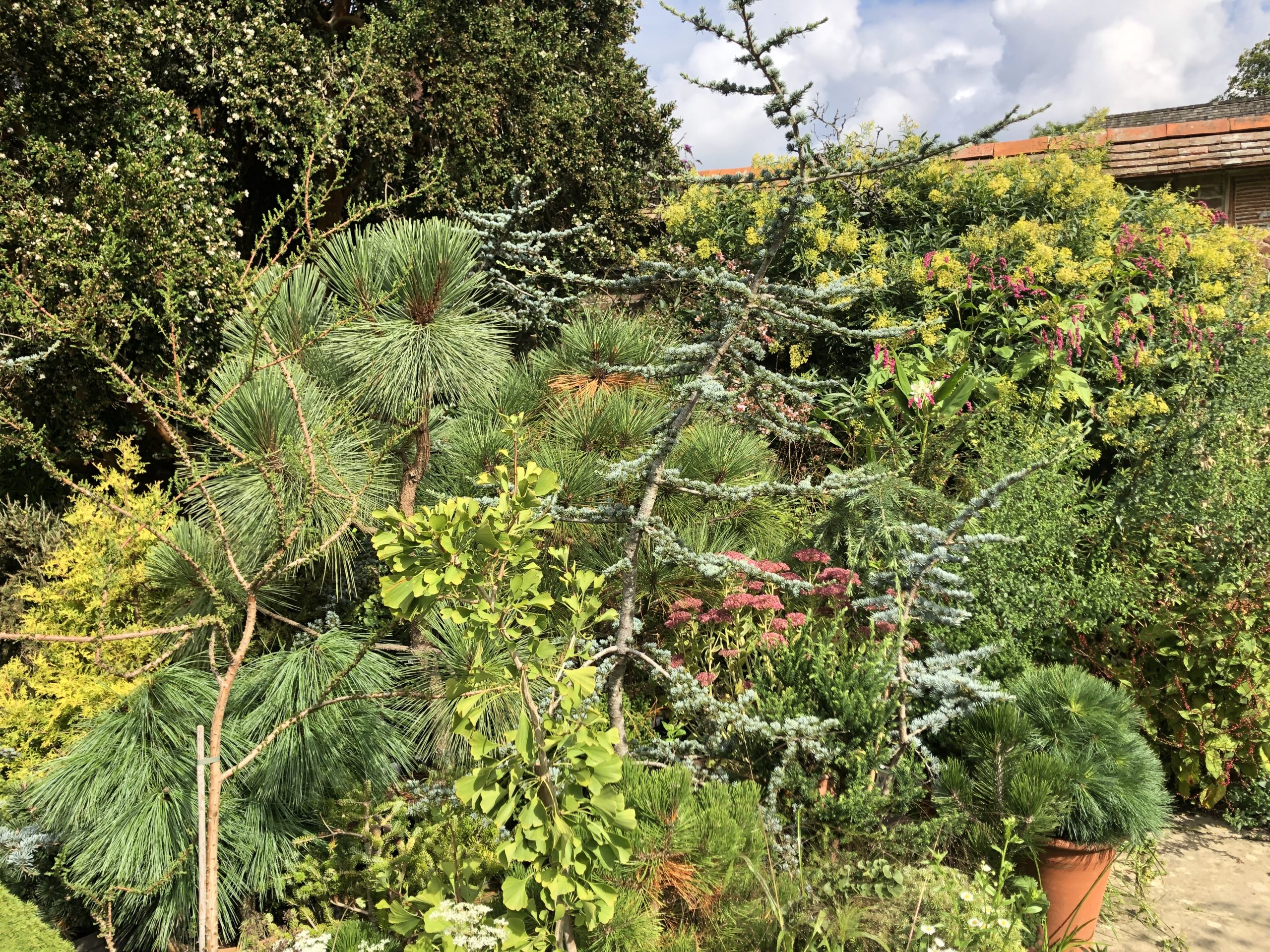
Conifer display
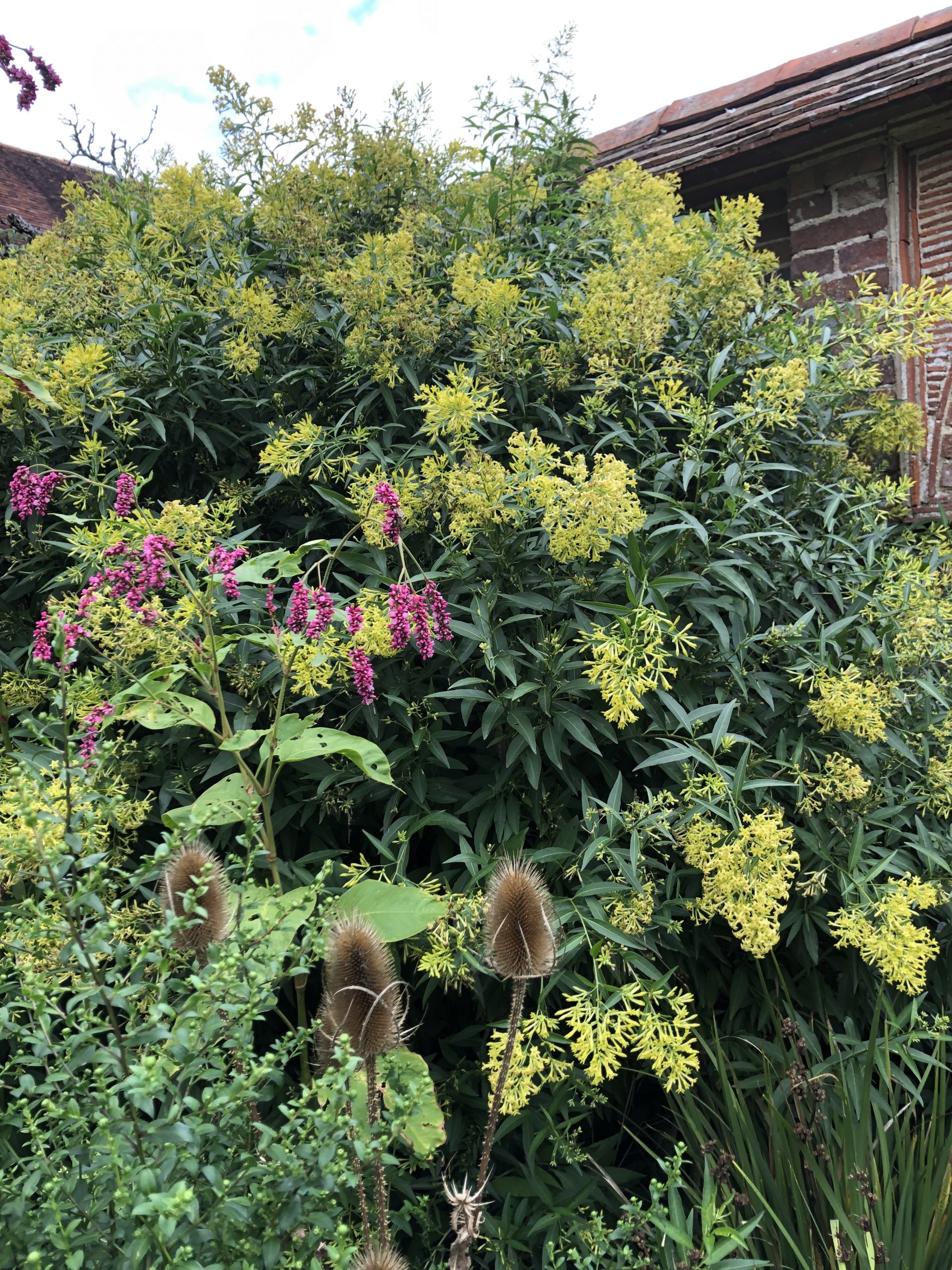
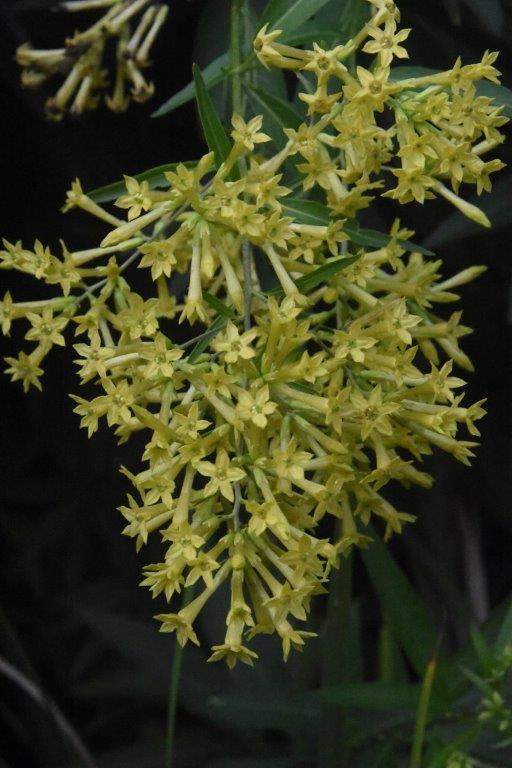
Cestrum parqui
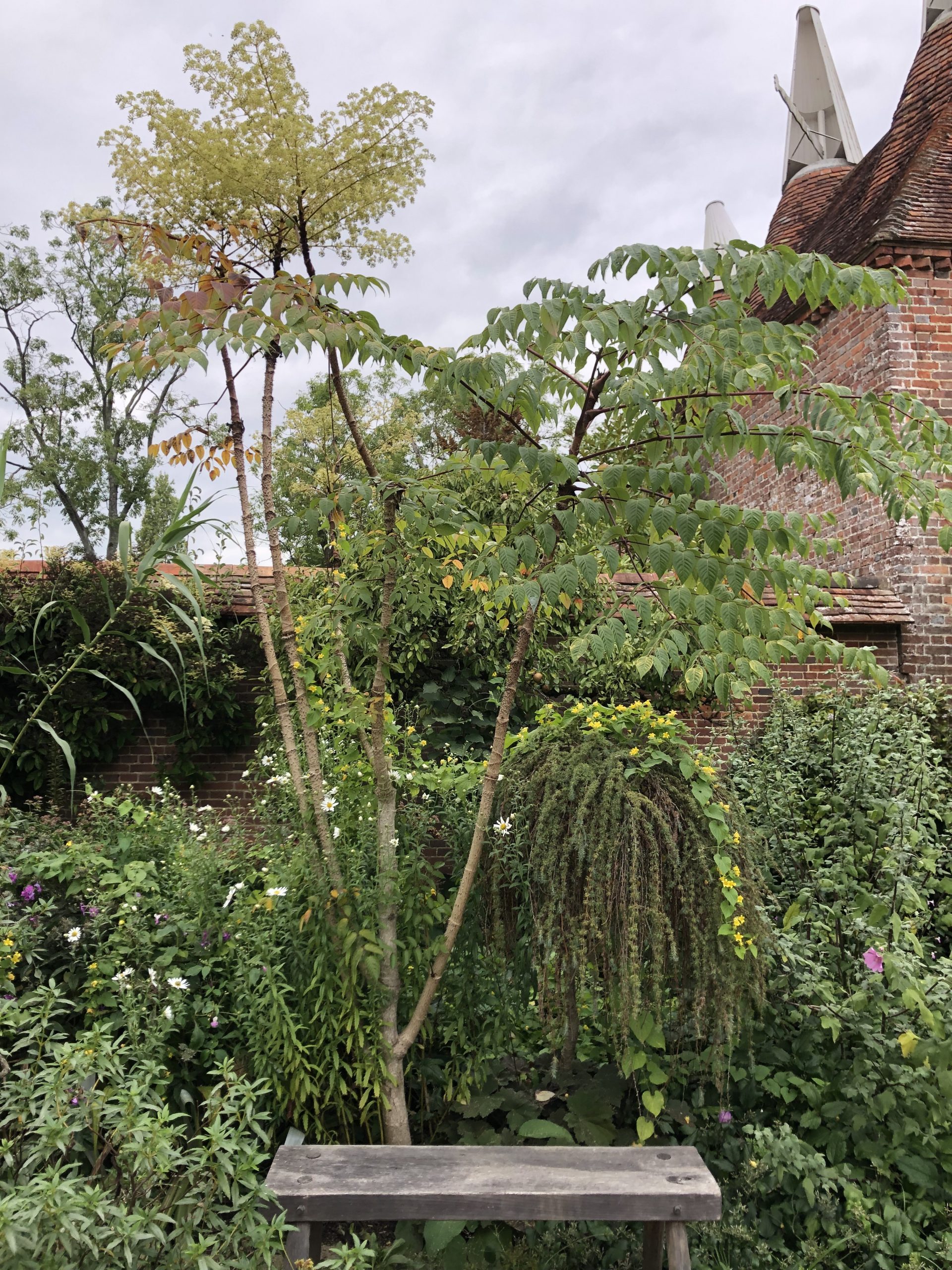
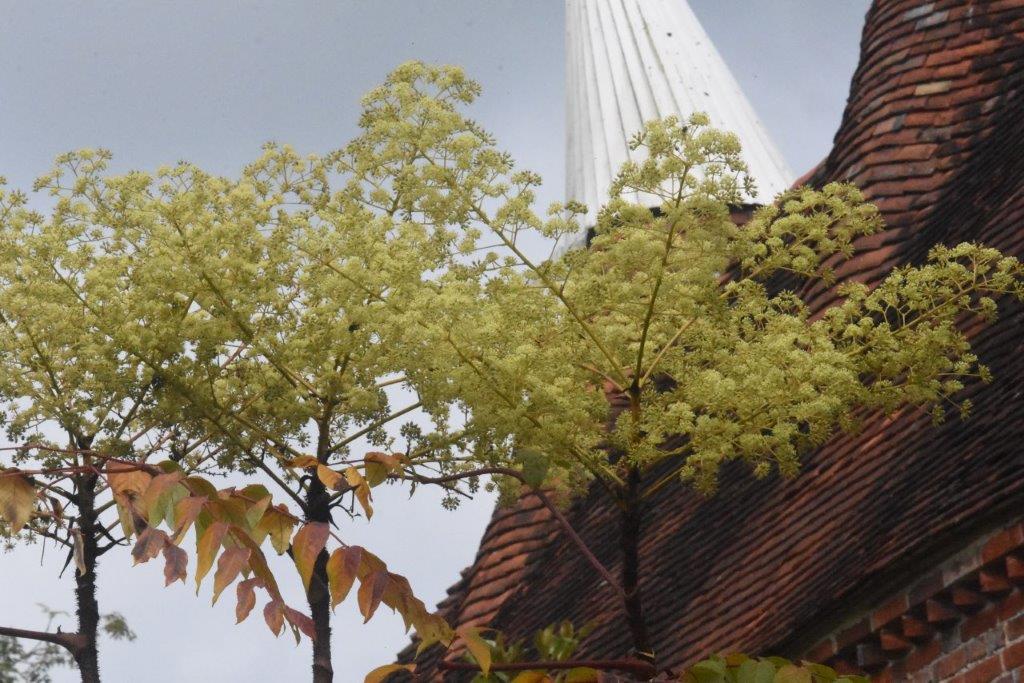
Aralia spinosa
On the Topiary Lawn, Fergus explained to us that what had once been kept as a formal lawn became a meadow awash with orchids once the mowing regime was relaxed. At another time of year, we would have seen a carpet of orchids, apparently a sight to behold!
On to the Exotic Garden, and we were treated to some of the most recent experimental design in the garden. This garden had started out as a collection of canna, dahlia and banana plants, with other plants added in over the years. Tetrapanax, Aloe, Catalpa, and Arundo donax were added next and then most recently conifers have been included too. This year, planting has been done right up to the path, so that visitors get up close and personal to the plants and have to push through them in places. There are splashes of colour, but it is mostly greens and greys. A huge variety of plants has been planted in combination, including Eucalyptus, Ginkgo biloba, Cotoneaster, cedars, begonias, ferns, bananas and palms.
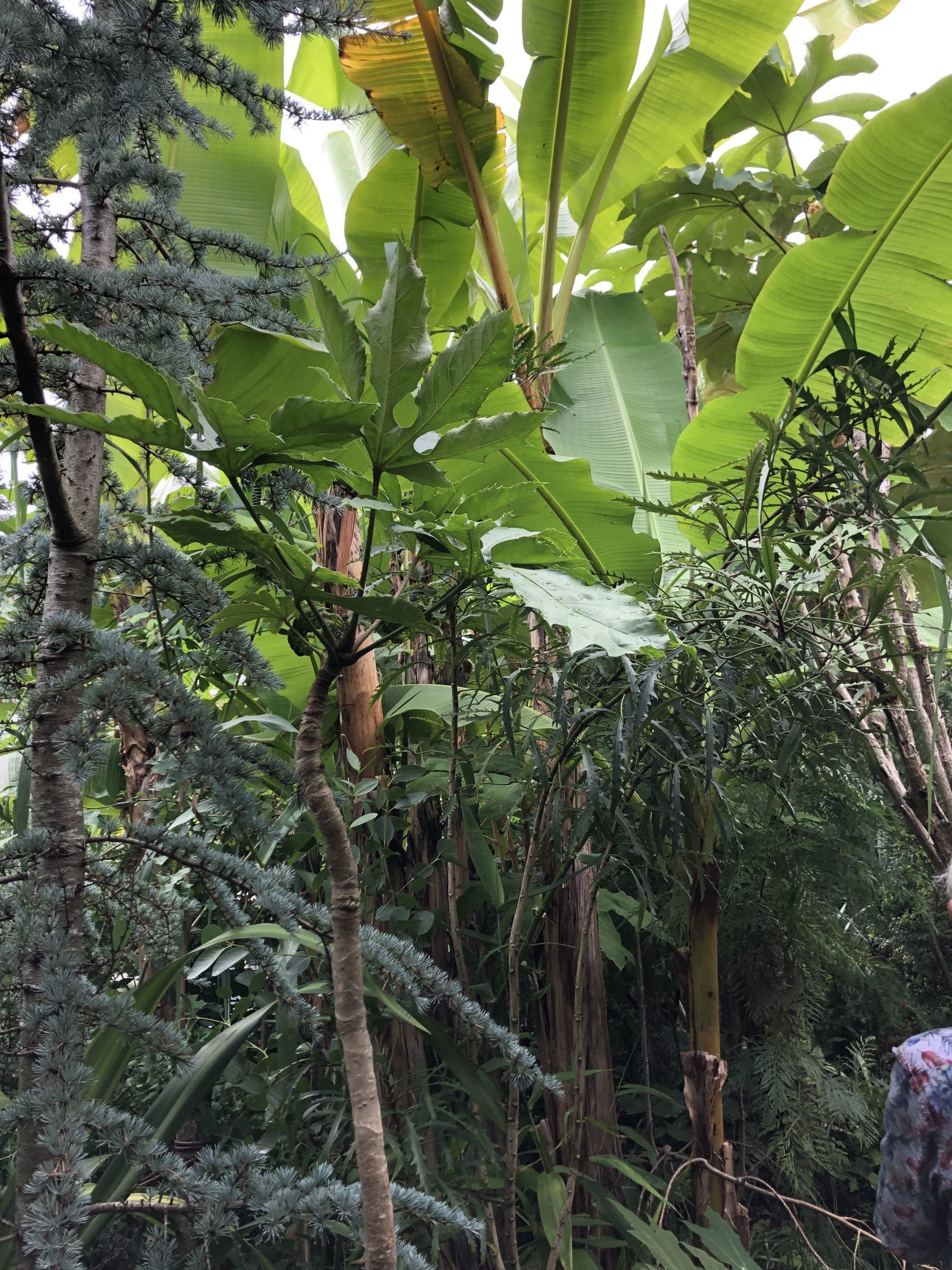
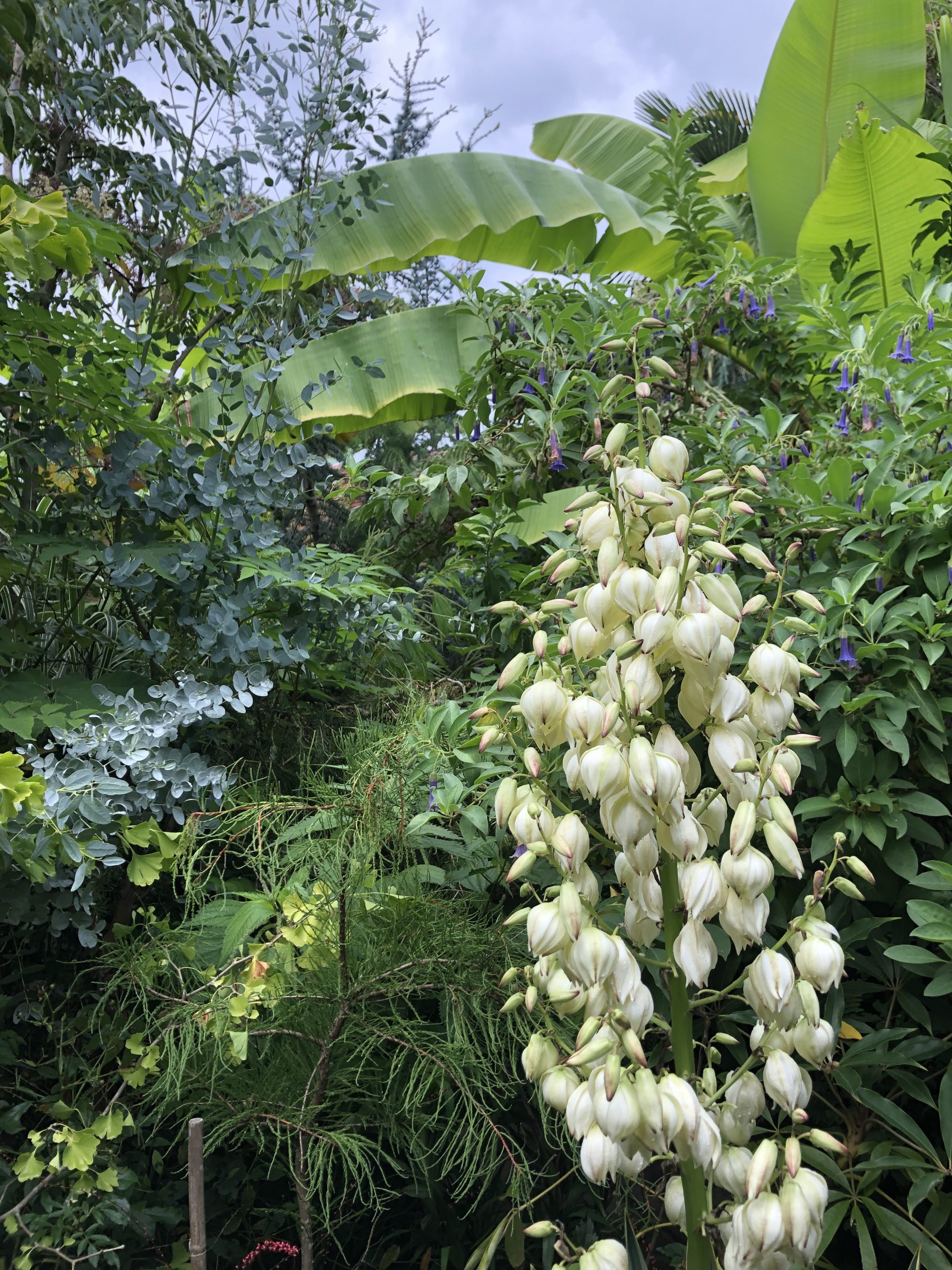
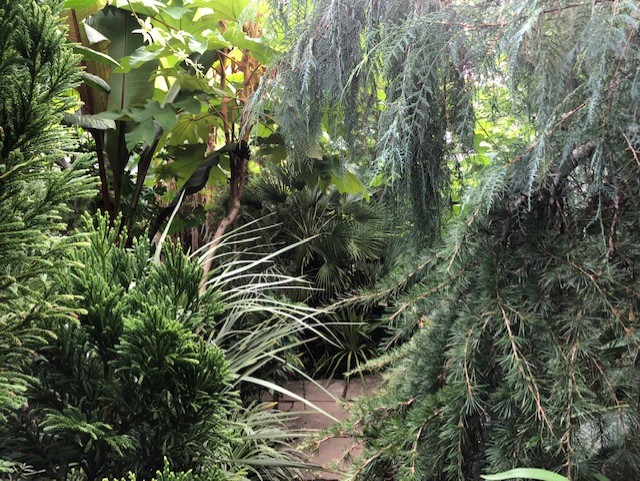
The Exotic Garden
Our final stop with Fergus was the Long Border, one of the best-known sights at Great Dixter. This is densely planted with a mix of shrubs, herbaceous perennials, annuals and bulbs. As such, it has a very long season and will be full of colour until October. Pockets of temporary planting along the border allow Fergus and his team to add new interest each season. Dahlia, asters, cannas, and geraniums were just some of the plants bringing colour at this time of year.
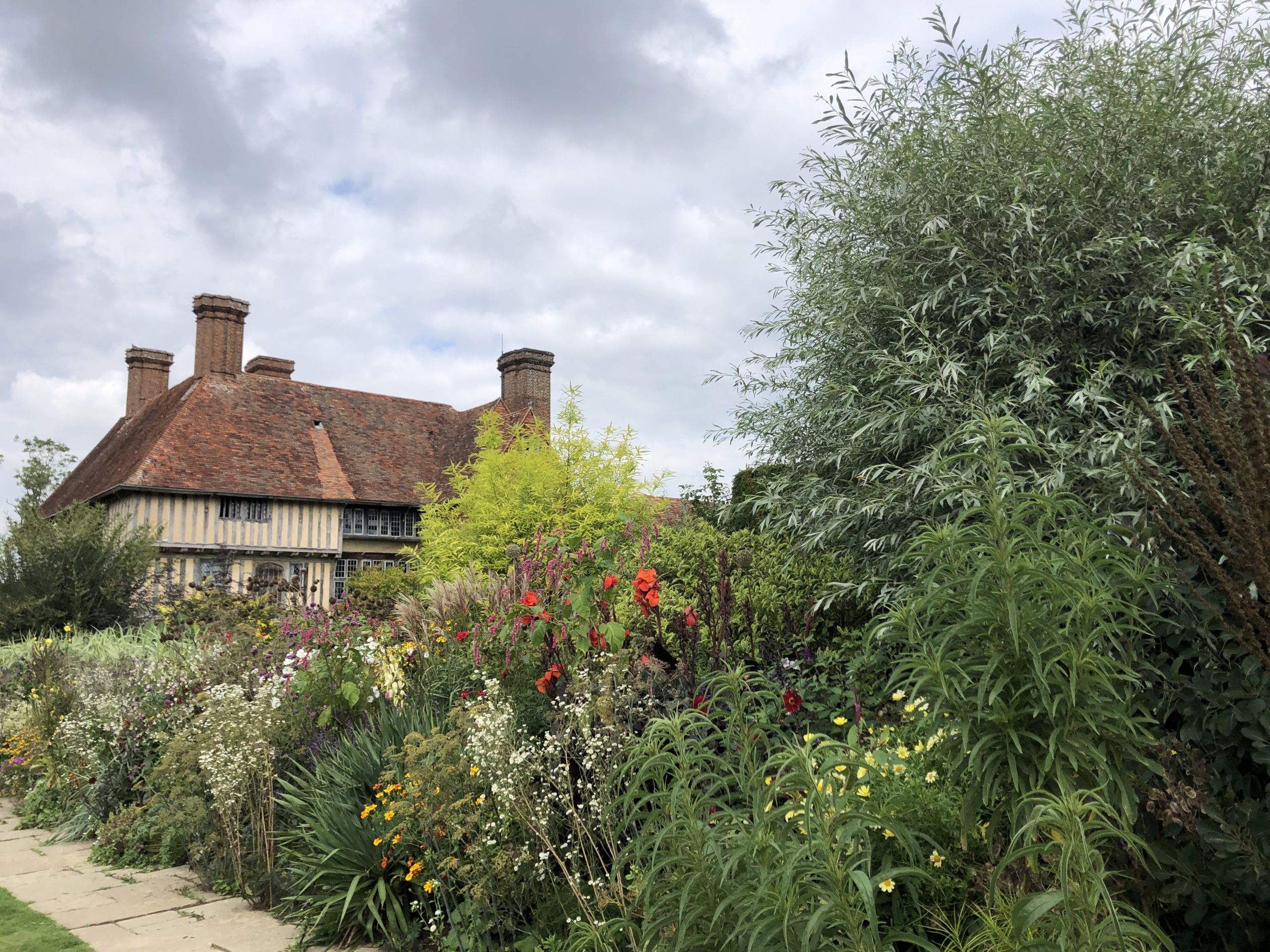
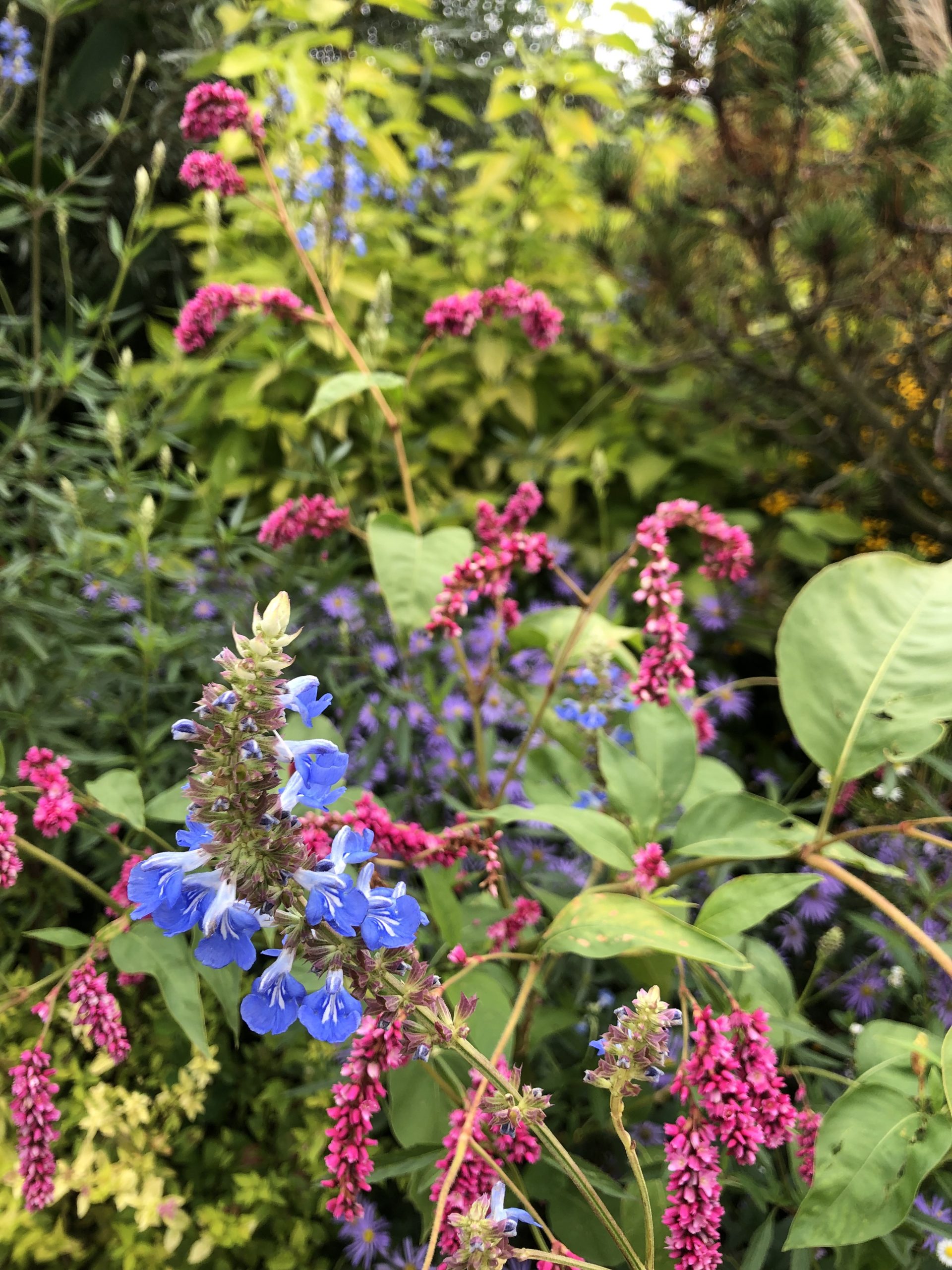
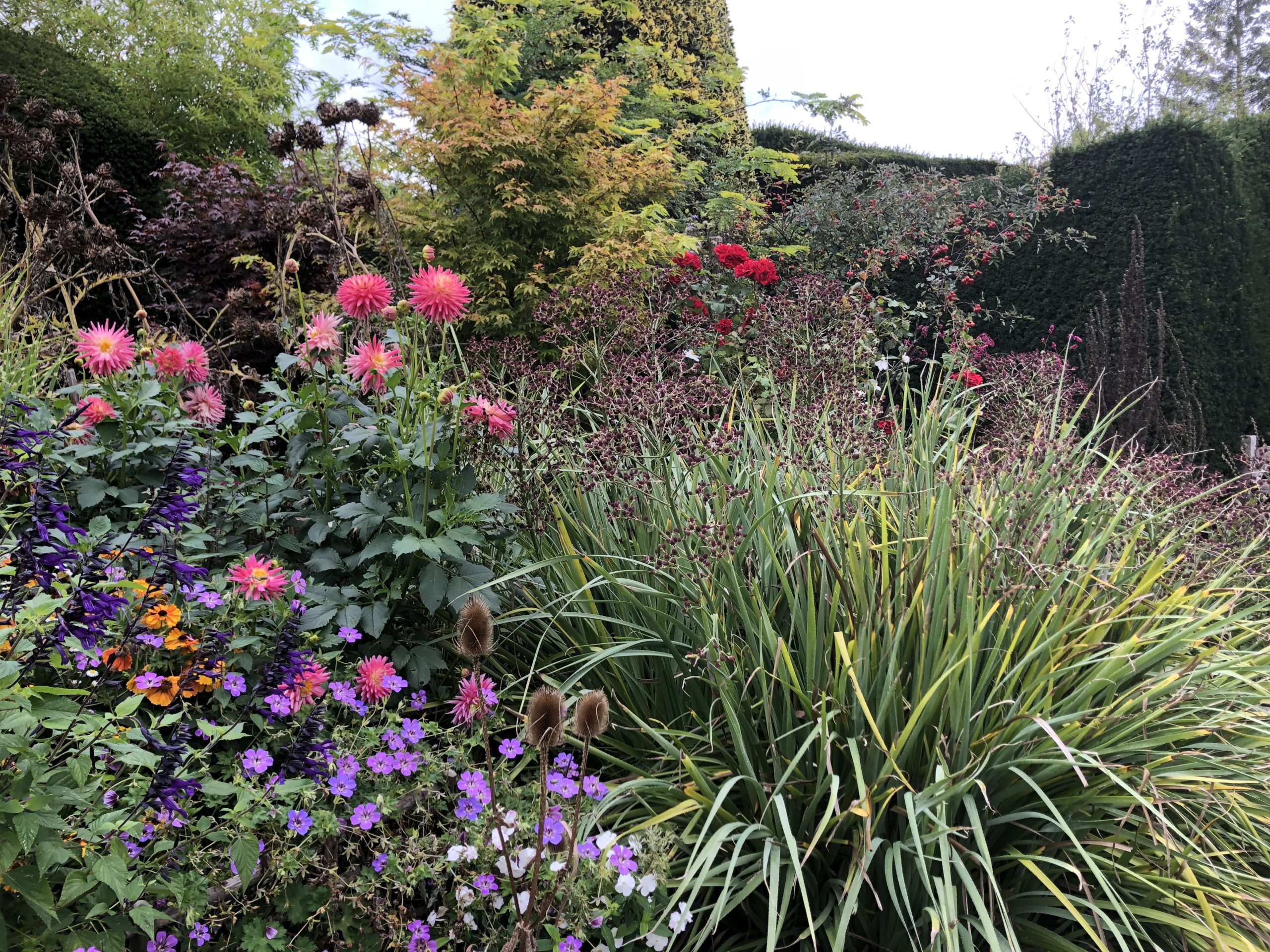
Vibrant colour in the long border
Following our tour with Fergus, we were free to explore all the other parts of the garden at our leisure, and there’s a lot of it! The meadows, orchard, Topiary and Peacock garden, the nursery and even the compost heaps are all on display with much to see. A picnic lunch gave us the chance to chat with other members, before we all headed back to explore further.
All in all, a fabulous day out to round off the summer, with thanks to Fergus for such an informative guided tour.
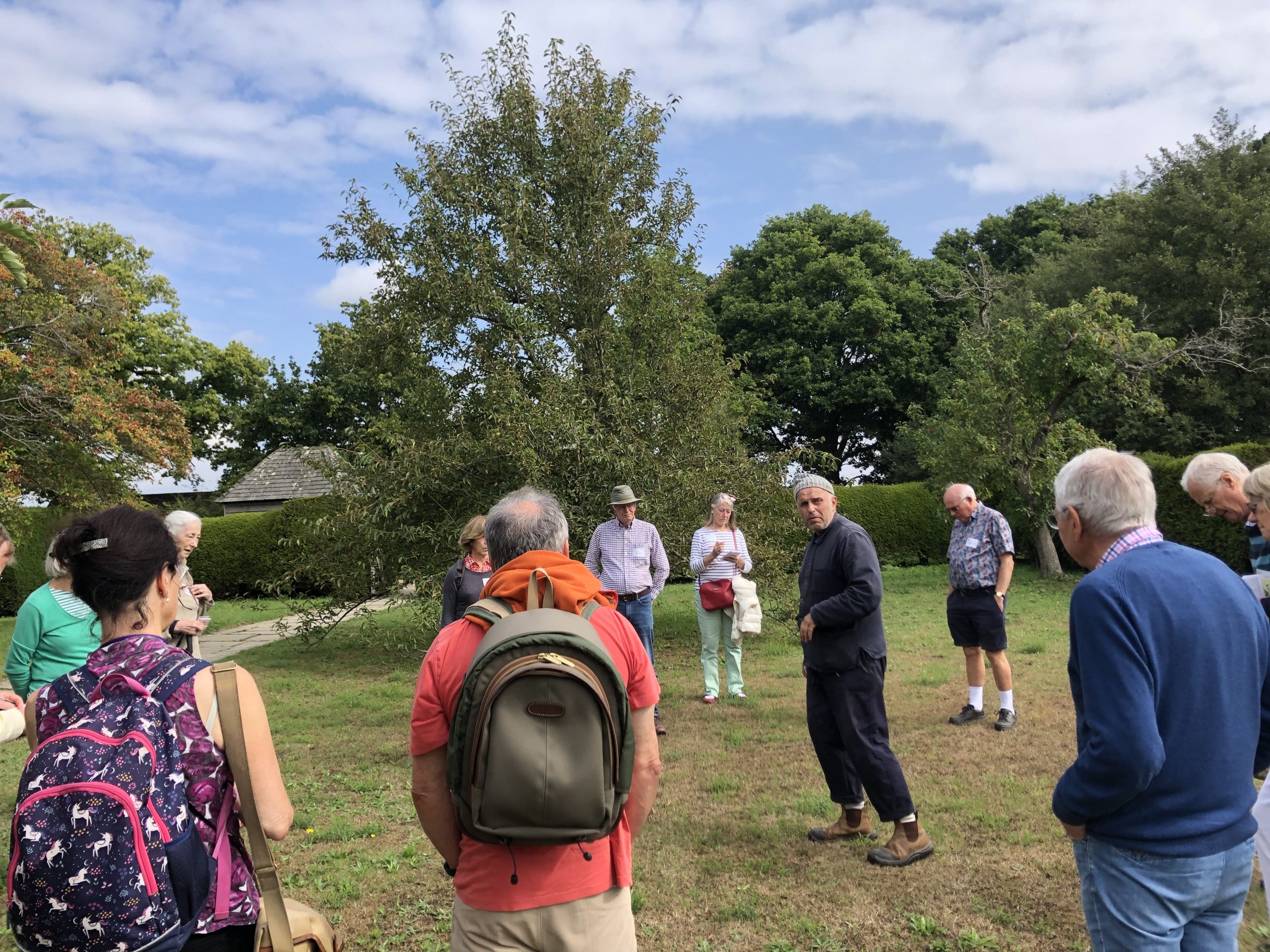
Fergus and the group
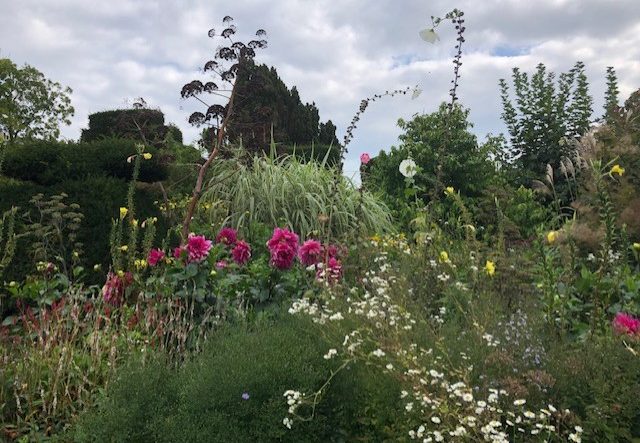
Border display in the Peacock Garden
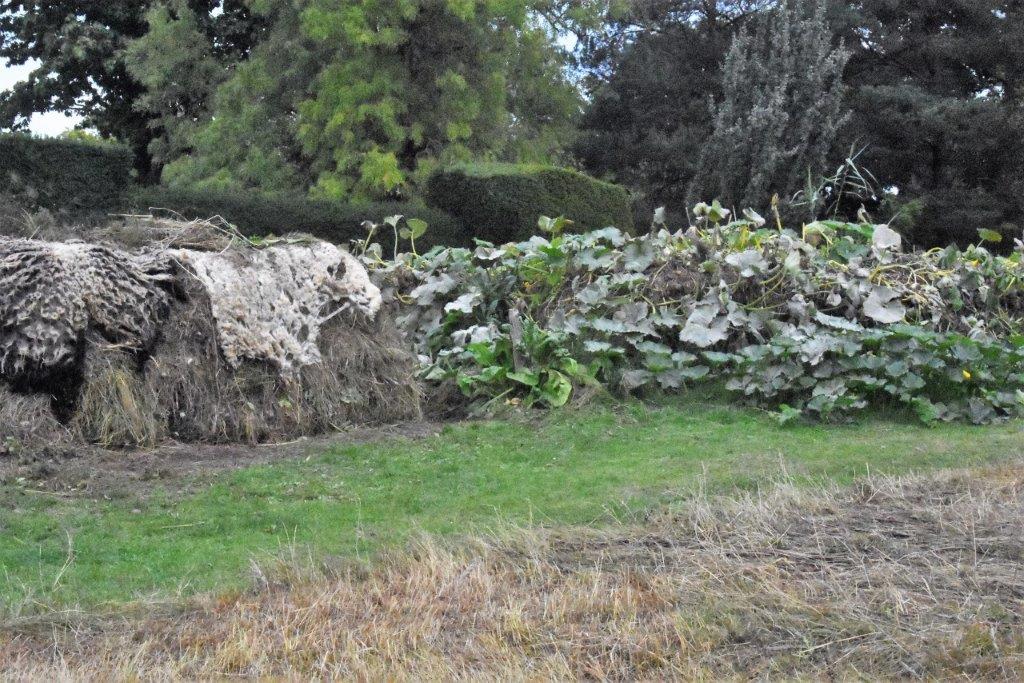
Some of the compost heaps
Text: Sharon Horder
Images: Lesley Jones and Sharon Horder

